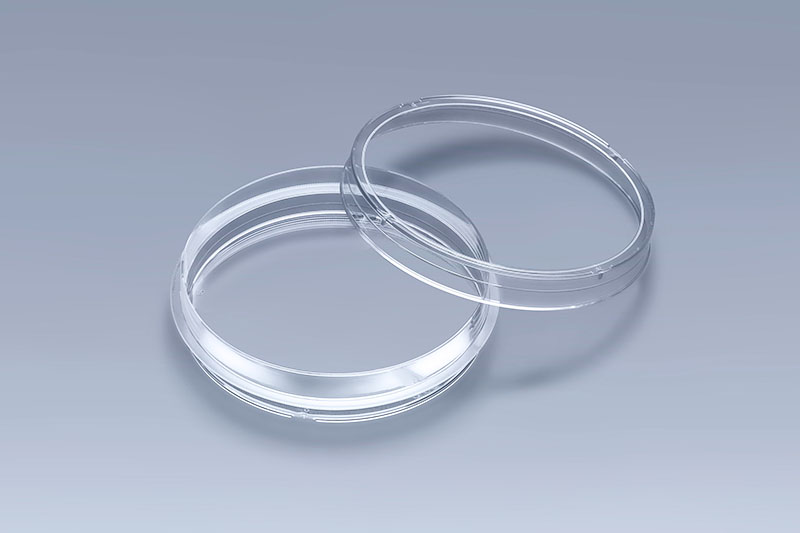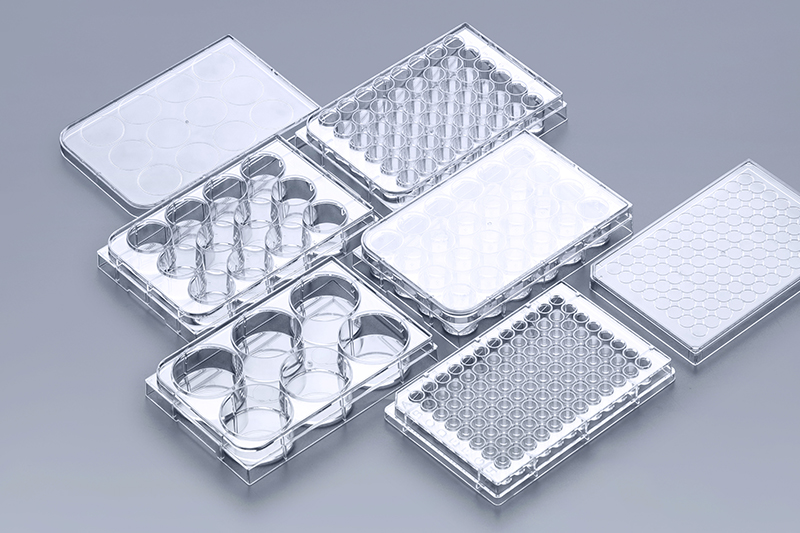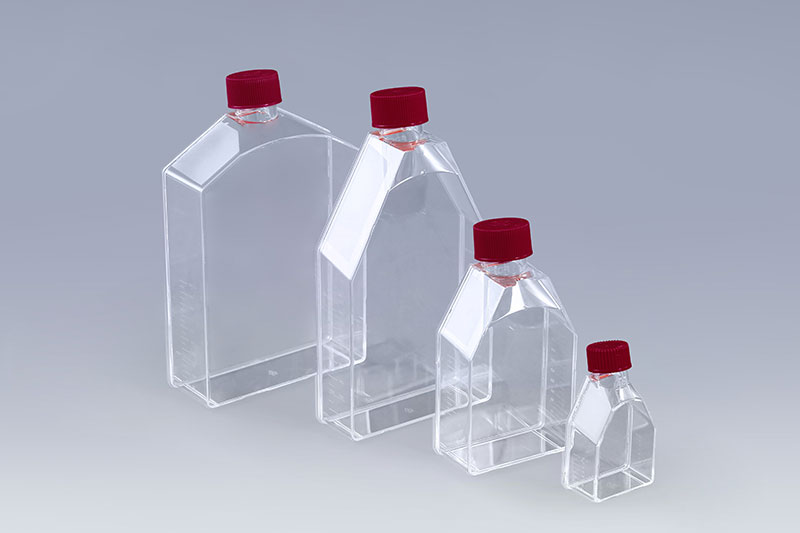Cell culture consumables are indispensable experimental tools in the cell culture process. Commonly used consumables include cell culture flasks, cell culture dishes, and cell culture plates. So what are their respective uses?
1. Cell culture dishes:
Cell culture dish is a laboratory vessel used for microorganism or cell culture. It consists of a flat disc-shaped bottom and a cover, usually made of glass or plastic. The materials of culture dishes are basically divided into two categories, mainly plastic and glass. Glass can be used for plant materials, microbial culture and adherent culture of animal cells. The plastic ones may be made of polyethylene, and are disposable or multiple-use. They are suitable for laboratory inoculation, streaking, and bacterial isolation operations, and can be used for the cultivation of plant materials.
2. Cell culture plates:
Cell culture plate can be divided into flat bottoms and round bottoms (U-shaped and V-shaped) according to different bottom shapes; the number of culture holes is 6, 12, 24, 48, 96, 384, 1536 holes, etc.; according to different materials, there are Terasaki plates and ordinary cell culture plates. Generally, flat-bottomed plates are used, while round-bottomed culture plates are mainly used for isotope incorporation experiments, and a cell collector is required to collect cells for culture. The cell culture plate is mainly made of PS material, and the material is treated sufface, which facilitates cell attachment, growth and expansion.
3. Cell culture flasks:
According to the shape, culture bottles are divided into wide-body culture flasks, triangular culture flasks and torsion-neck culture flasks. Some cells and tissues can grow in suspension, but a considerable number of mammalian cells need to adhere to the surface. Culture bottles can meet the needs of both suspension and adherent growth of cells.
The above are just a few common cell culture consumables. Cell factory systems, disposable bioreactors, etc. all belong to the field of cell culture consumables. With the rapid development of the biological research field, cell culture consumables will maintain a rapid development trend in the future.
The FAI climbed 5.9 percent year-on-year in the first 11 months of 2018, quickening from the 5.7-percent growth in Jan-Oct, the National Bureau of Statistics (NBS) said Friday in an online statement.
The key indicator of investment, dubbed a major growth driver, hit the bottom in August and has since started to rebound steadily.
In the face of emerging economic challenges home and abroad, China has stepped up efforts to stabilize investment, in particular rolling out measures to motivate private investors and channel funds into infrastructure.
Friday's data showed private investment, accounting for more than 60 percent of the total FAI, expanded by a brisk 8.7 percent.
NBS spokesperson Mao Shengyong said funds into weak economic links registered rapid increases as investment in environmental protection and agriculture jumped 42 percent and 12.5 percent respectively, much faster than the average.
In breakdown, investment in high-tech and equipment manufacturing remained vigorous with 16.1-percent and 11.6-percent increases respectively in the first 11 months. Infrastructure investment gained 3.7 percent, staying flat. Investment in property development rose 9.7 percent, also unchanged.
 English
English



















































 Cell Culture Dishes
Cell Culture Dishes Cell Culture Plates
Cell Culture Plates Cell Culture Flasks
Cell Culture Flasks